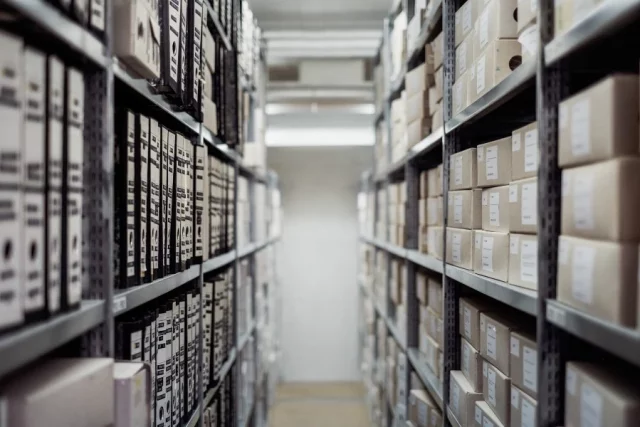Technology is transforming the warehouse and logistics industry from online order tracking to intelligent automation. As warehouses become larger, employing hundreds of staff members, managing operations manually is becoming increasingly complex – this has seen a surge in companies investing in modern technologies that enable businesses to maximize efficiency while keeping costs low. This blog post will look at how new, cutting-edge technology helps enhance all aspects of warehouse management – from receiving shipments to shipping orders. With predictive analytics and artificial intelligence helping streamline daily processes across the board, it’s worth exploring what these solutions can offer for optimizing your warehouse operation.
Warehouse Management Systems (WMS) And What They Can Do
The logistics and supply chain management world can be complex, but Warehouse Management Systems (WMS) have revolutionized the industry. A WMS is a software application designed to enhance the efficiency of warehouse operations by automating manual processes. It helps organize orders, manage inventory, and optimize warehouse space, ultimately impacting the speed and accuracy of product delivery. A WMS can also provide real-time information on inventory and order status, making tracking and tracing items in transit easier. Explore the internet, where you may find a website dedicated to an automated warehouse system. Make sure to click here for an insight into what you can expect with this system. With a WMS, businesses can streamline their warehouse operations and reduce costs, making it an essential tool for any organization that relies on fast and efficient logistical operations.
Tips for choosing the right WMS for your business
Finding the perfect warehouse management system for your business can be daunting, but it’s crucial to ensure the smooth and efficient running of your operations. There are a few essential tips to remember as you search for the right system. First and foremost, identify your specific business needs and look for a strategy that aligns with those requirements. Additionally, consider the system’s scalability as your business grows and evolves. It’s also important to factor in the interface’s ease of implementation and user-friendliness. With these tips in mind, you’ll be on your way to selecting a warehouse management system that is ideally suited to the needs and goals of your business.
Automating Processes With Robotics Process Automation (RPA)
Businesses are constantly evolving, and technology is a significant factor in driving this change. Automating processes within a company is becoming increasingly popular, and this has become possible with Robotics Process Automation (RPA). RPA allows businesses to automate repetitive, manual tasks by using software robots. This technology provides more significant benefits than just reducing errors and increasing efficiency – it also frees employees from mundane tasks, enabling them to focus on more complex, value-added work. As RPA becomes more widely adopted, it is expected to continue revolutionizing how businesses operate.
Other automated warehouse systems
From automated storage and retrieval systems (AS/RS) to vertical lift modules (VLMs), various options are available to suit different types of inventory and business needs. Conveyor systems, for example, are ideal for moving heavy or bulky items quickly and efficiently, while carousels are perfect for handling smaller items and optimizing floor space. Additionally, shuttle systems can transport goods without human intervention, improving accuracy and reducing the risk of error. Whatever your business needs may be, a wide range of automated warehouse systems are available to help streamline operations and drive efficiency.
Leveraging Artificial Intelligence (AI) To Increase Efficiency In The Warehouse
As technology evolves, businesses constantly search for ways to improve their operations. The warehouse, thanks to the power of Artificial Intelligence (AI), is seeing a significant boost in efficiency. With the ability to collect and analyze vast amounts of data, AI-powered systems can optimize everything from inventory management to shipping and receiving. By leveraging AI, warehouse managers can operate more efficiently, reducing human error and increasing productivity. With the help of advanced algorithms, predictive analytics, and automation tools, AI is transforming the warehouse landscape, making it easier for businesses to stay competitive in today’s fast-paced market.
Utilizing The Internet Of Things (IoT) To Monitor Inventory Levels
Staying on top of inventory levels is essential to ensure smooth operations. That’s where the Internet of Things (IoT) comes in. By leveraging IoT technology, businesses can gain valuable real-time insights into their inventory levels. This means they can rest easy knowing that their products are always in stock and ready to go. With sensors and other IoT devices in place, businesses can also receive automatic alerts when inventory levels get too low, allowing them to restock before it becomes an issue. By using IoT to monitor inventory levels, businesses can improve their efficiency and save time and money while staying ahead of the competition.
Optimizing Warehouse Space With Augmented Reality (AR)
AR technology helps warehouse managers visualize the available space and explore different configuration options in real time. By using AR headsets, employees can see virtual objects overlaid in the physical environment, allowing them to rearrange and reposition stock items easily. This innovative technology will enable businesses to maximize space for their inventory, increase productivity and ultimately boost profits. AR technology is revolutionizing how people think about warehouse operations and will continue to do so in the coming years.
Enhancing Safety Protocols With Virtual Reality (VR) Simulations
Ensuring safety measures are in place is essential in various industries, such as construction, healthcare, and aviation. Recently, Virtual Reality (VR) technology has emerged as an innovative solution for enhancing safety protocols in these industries. VR simulations enable employees to experience a wide range of realistic scenarios that could occur, such as accidents or emergencies, in a safe and controlled environment. It is an excellent employee training tool, helping them develop the skills and knowledge to handle challenging situations effectively. This technology could significantly reduce workplace accidents, injuries, and fatalities and boost overall employee safety awareness and preparedness. The benefits of using VR simulations are undeniable and revolutionizing how industries approach workplace safety.
As warehouse owners and managers consider ways to modernize their warehouses and increase efficiency, they should remember all the cutting-edge technologies available. By taking advantage of these technologies, businesses can optimize storage capacity and cut costs, leading to greater profitability in the long run. As automation technology continues to evolve and become more accessible, warehouses will be able to run faster and more efficiently than ever before.














